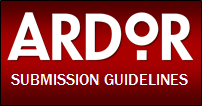Hair of the Dog: Ken Taylor's Dog With Elizabethan Collar
A Book Review by J. Peter Moore
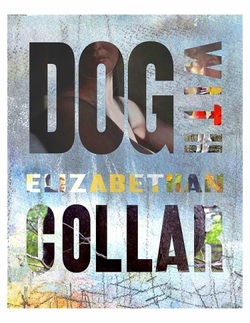
By the time one gets to the seventh poem in Ken Taylor’s recent collection, Dog With Elizabethan Collar, certain readerly expectations begin to take hold. The first line of the book says it all: “lights up on the peepshow entry flowing over / a fixed width nigh the b-side of eyelids.” Here we have a relatively routine set of commonplace objects and events (electrical lighting, adult entertainment, the flip-side of a popular record, facial skin folds). Yet the chain of pronouns that connects these set pieces into the rhetorical stuff of statement calls their fixed signification into question: Are the lights those of a twinkling marquee variety, advertising the entryway to the earthly pleasure dome? Or do they belong to some unnamed custodian, who patrols his sticky beat with a long-handled flashlight? By poem number seven, we get the drift. Taylor’s is a poetry that seeks to suspend some of our more obdurate expectations for clarity, fixed perspective and digestible diction. His is a poetry that disorients as it draws us near. Or, as Taylor puts it in “Moebius Syndrome,” “we each determine the need for coded speech.” To not get our feelings hurt by these fierce walls of wailing intensity we’d do well to accept Taylor’s line for what it is: a finely wrought rebus masquerading as subject and predicate.
But then we get to poem seven, entitled “Flash Cards.” It opens with that rarest of features in Taylor’s poetry, the proper name of a single person (Kate), who remains the central focus, the anchor as it were, for the entirety of the poem. Things happen to Kate. Kate does things. And the poem records these things in a language that accommodates the question: what is this poem about? “Flash Cards” is about a young girl studying for a vocabulary test with the speaker, who identifies himself as her father. The event gives rise to a series of non sequiturs in which Kate asks the speaker about his failed marriage with her mother. At the end of the poem, Taylor returns to his steady, workmanlike brand of bebop bricolage, leaving the straightforward lyric to stand out against the rest of the book, like Kate’s nonchalant non sequitur regarding love and its discontents. Yet the poem does not read like a gratuitous ode written long before or after Taylor’s more characteristic work. It does not read like a poem that Taylor includes simply because he thinks it is good. The book as a whole seems more interested in frustrating the good, than it does in performing some canned version of the beautiful, the sublime, or the picturesque. Rather “Flash Cards” with its effortless errancy manages to stand far enough outside of Taylor’s typical range of aesthetic dissonance that it is capable of looking back in with great acuity and startling intimacy. It would be too bold to call “Flash Cards” the thesis statement of Taylor’s book. Instead the poem seems to fulfill what I would call the book’s Theseus statement. Like the legendary hero of Athens, the poem offers us direction, keying us into the philosophy underpinning the book, while preserving the labyrinthine network of possible paths and hedges.
“Flash Cards” with its effortless errancy manages to stand far enough outside of Taylor’s typical range of aesthetic dissonance that it is capable of looking back in with great acuity and startling intimacy. Ken Taylor, Author of Dog With Elizabethan Collar (@heyclown on Twitter) | Of all the themes that “Flash Cards” touches upon, none is more apparent than its preoccupation with language. The vocabulary words that the speaker asks of Kate are not necessarily difficult words. We have “ambiance,” “askew,” and “cranny.” The only word that might send the reader scrambling for a dictionary is “lassitude,” a GRE term to beat the band. But these are words that one cannot easily drop into a sidewalk conversation with a stranger without coming off a pedant (Well, I guess it depends on the sidewalk). Nevertheless, Taylor makes consistent usage of arcane words. Conspicuous words surface that are not necessarily hard to define, but rather deeply embedded within a specific context, the precise jargon of a given field. There is “under-five speech” and “above-the-line credit.” In Taylor’s hands the sky turns “tumescent.” In the poem “How to Draw Seven Circles” he loads every rift with cryptic ore. Coryphées feted in a bipartite division strike each chair in the cunning little machine before you bump into one |
Coryphée is not simply the leading dancer of a ballet troop. For Taylor it is also a word that calls abundant attention to itself as word and to the process of language acquisition that goes along with the flash cards.
But Kate’s bout with the lexical deck also resonates with the way in which Taylor collages his esoteric material. “Flash Cards” foregrounds the personal world of familial fracture: “she asks how long her mother / and I were married […] but how long were you in love? she asks.” Rather than engage with Kate’s question at length, the speaker slips his response into the innocuous details of the unfolding scene. He calls out ballistics, as if the word could in itself convey some inscrutable sense of the wound hidden under the rupture that has healed over. Kate struggles with the word, “it’s something about bullets.” The speaker intervenes “the study of projectiles.” Kate instructs him to place that card in “the other pile.” In this moment, with Kate separating the words into two different piles, Taylor chooses to close his poem by emphasizing her ability to erect a highly personal order. The words are not separated into stacks of Latinate origins versus French or Anglo Saxon origins. Rather the cards fall into piles that correspond to her personal relationship with them: the ones she knows and the ones she does not. Both have a place, and all seem welcome. A clear analogue comes by way of Taylor’s poems, which follow a personal order as opposed to some a priori, overarching conceptual basis. His poems read like little atomistic pieces of overheard eloquence, spangled shards picked up in native places: “pastoral dust,” “ivy run amok,” “sheer calculus,” “the smell of piss on roses,” “jays snitch and cry,” “the reply is rain,” “a landscape of predictability,” “provender of canon & verse: luster & richocet.” These images, these piles of personal meaning, present Taylor as a poet of the notebook, always open to the orphic possibility of whatever falls into his lap.
[Taylor's] poems read like little atomistic pieces of overheard eloquence, spangled shards picked up in native places ... these images, these piles of personal meaning, present Taylor as a poet of the notebook, always open to the orphic possibility of whatever falls into his lap. | In addition to foregrounding a concern for the materiality of language, “Flash Cards” also frames the speaker’s accentuated relationship with female subjects. In it, we read of a speaker caught between the unconditional love of a daughter and the unrecoverable love of a former romantic partner. In his earlier collection, First the Trees Now This, Taylor positions himself in relation to the Black Mountain poetic lineage. And while the old adage about form and its content-based extension finds its place in this collection, the clearest evidence of Taylor’s engagement with the Black Mountain writers comes in the stress he places on the male gaze. He takes great interest in the female form as represented through art, as well as the socio-cultural constructions of femininity. Male/Female heterosexual desire bookends the collection, as it opens with a peep show and closes with a man and woman fondling each other in the back of a crowded lecture hall. Throughout we see “chorus girls” and women undressing, their “panties web past knees.” But we also see the unsexed, familial female, represented at length in the poem “Dirge for Alabama” |
And still there is one more way in which “Flash Cards” reflects the variety of aesthetic order in Taylor’s creation. As the poem reminds us, the flash card rips a given word from its ever-evolving social context, where it is spoken or written as part of a larger semantic chain. Most commonly, we either hear a word as it is spoken aloud in conversation, or we read it in a sentence and in so doing give the word private audition. Flash cards strip the word from this auditory context and places the signifier on a strictly visual plane. The word becomes a picture of itself, a stand-alone shape gesturing towards a kind of Poundian ideogrammar. This visual preoccupation rhymes with perhaps the most apparent feature of Taylor’s collection. The book is large in diameter. The expansiveness of its page is meant to accommodate the twelve works of full-color visual art that accompany the poems. Each contributed by a different contemporary artist, the paintings and photographs are simultaneously inspired by and the inspiration for Taylor’s writing. They amplify the poet’s abiding concerns for abstraction, color and gaze. They lead him into deeper eddies of encaustic wordplay. And most importantly they give the overall project a sense of rhythm.
in pressed down weeds: memory beagles
sound this dearth. we put peggy in the earth.
sound this dearth. we put peggy in the earth.
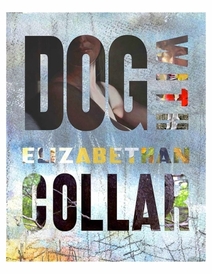 Order Dog With Elizabethan Collar Online
Order Dog With Elizabethan Collar Online In pat southern syntax, Taylor tries his hand at Faulkner’s As I Lay Dying. Peggy has died and the family comes from distant corners back to the country, where they will place her body to rest. Like Creeley who used his lyrics to think through the often off-putting elements of his erotic desires, Taylor shows us that the poem is a place for understanding the pull of the female beloved. A pull that begins with and bleeds back into the love of the mother, the love of the daughter. What I find most compelling about the poet’s self-conscious interest in the construction of female gender roles is the way in which he can at once call attention to the artificiality of these tropes without sacrificing their erotic, violent and redemptive charge.
From modernist word magic to the pictorial collaboration, Dog with Elizabethan Collar embodies the frightening splendor that led LeRoi Jones to say of John Coltrane’s playing, it was “like watching a grown man learning to speak.” In this case, the learning happens one flash at a time.
From modernist word magic to the pictorial collaboration, Dog with Elizabethan Collar embodies the frightening splendor that led LeRoi Jones to say of John Coltrane’s playing, it was “like watching a grown man learning to speak.” In this case, the learning happens one flash at a time.

J. Peter Moore lives in Durham, North Carolina, where he is a PhD candidate in English at Duke University, writing a dissertation about the concept of vernacularity in postwar American poetry. In addition to his critical writing, which can be found in American Literature, Chicago Review, and Rain Taxi, his poetry has been published in Fence and Boulevard. He is the author of the chapbook Southern Colortype.
| Book Review: We by Michael Landweber | Ken Taylor's Poem, On The Trail Of The Dinosaur, can be read in Issue Two of ARDOR Literary Magazine. Those hoping to purchase a copy of Ken's chapbook, Dog With Elizabethan Collar can do so at a 10% discount by using promotional code ARDOR (all caps) on checkout HERE. | Book Review: The Biology of Luck by Jacob M. Appel |

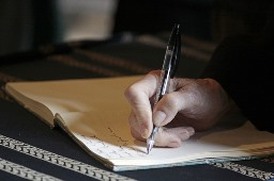

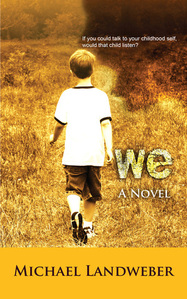
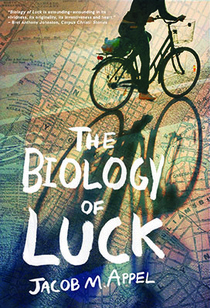
 RSS Feed
RSS Feed

